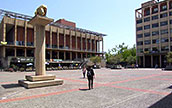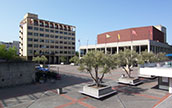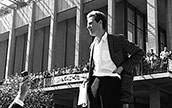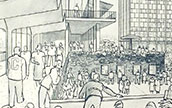

PROJECTS
Project: California Student Center/Lower Sproul
Plaza, UC Berkeley Historic Structure Report
LOCATION: University of California, Berkeley, California
CLIENT: University of California – Berkeley
DATE COMPLETED: 2009
In 2008-09, Chris VerPlanck, as part of his original firm of Kelley & VerPlanck Historical Resources Consulting, prepared an extensively researched historic structure report (HSR) for the University of California, Berkeley to document the physical construction chronology and socio-cultural history of the California Student Center/Lower Sproul Plaza complex. The complex, which consists of four buildings: Dr. Martin Luther King, Jr. Student Union, César Chávez Dining Commons, Eshleman Hall, and Zellerbach Hall, and two linked landscaped plazas: Upper and Lower Sproul Plaza, was developed between 1958 and 1968 by the University in association with the Associated Students of the University of California (ASUC). Designed in a modernist architectural vocabulary by the firms of DeMars & Reay and Donald Hardison & Associates, the Lower Sproul Plaza complex was a significant departure from the Beaux Arts principals that had dominated University planning and development activity since the 1890s. Surpassing its architectural significance is the key role that the Lower Sproul Complex complex played in the 1960s-era protest movements at UC Berkeley, including the Civil Rights, Free Speech, and Peoples' Park movements.
Chris VerPlanck's client, the Department of Physical and Environmental Planning, hired his firm to evaluate the historical and cultural significance of the Lower Sproul Plaza complex, most of which is still less than 50 years old, provide preliminary information on its physical condition, as well as how to sensitively adapt it for another 50 years of use. The HSR, completed in July 2009, is being used by the University to inform ongoing planning efforts in the Lower Sproul Plaza area.
Contributors to the report include Stanford University Professor Emeritus Paul V. Turner, author of Campus: An American Planning Tradition; and David B. Stewart, a well-known expert in modernism and author of The Making of A Modern Japanese Architecture: 1868 to the Present.



